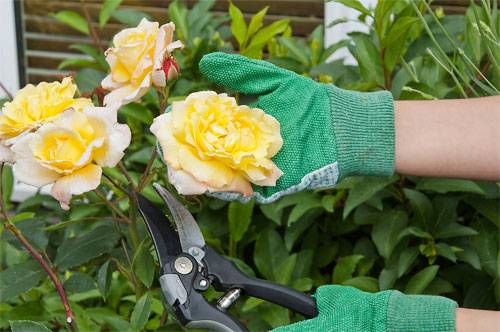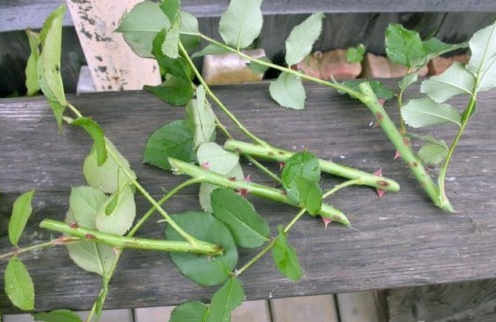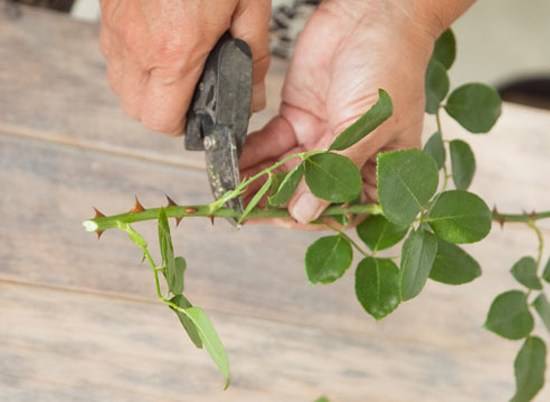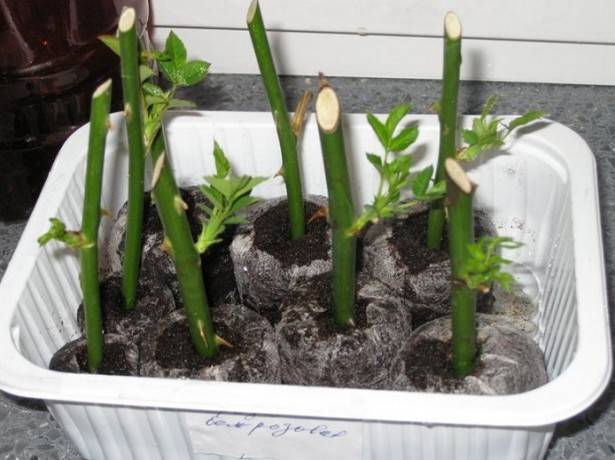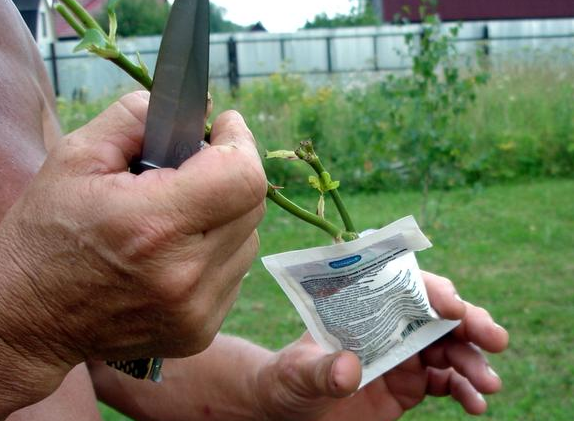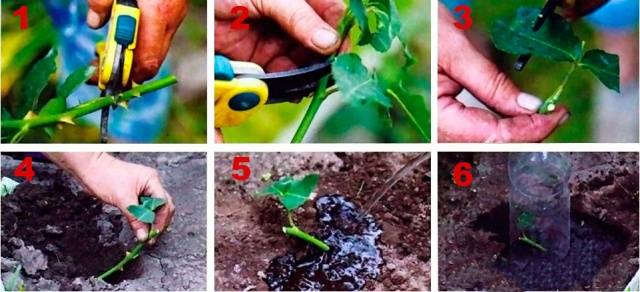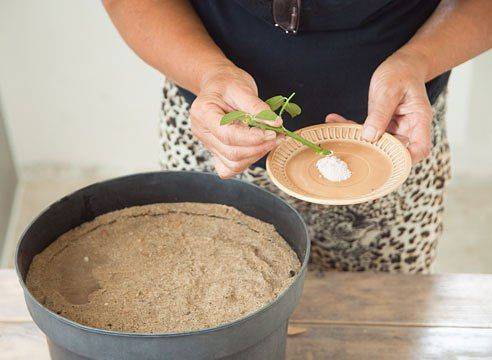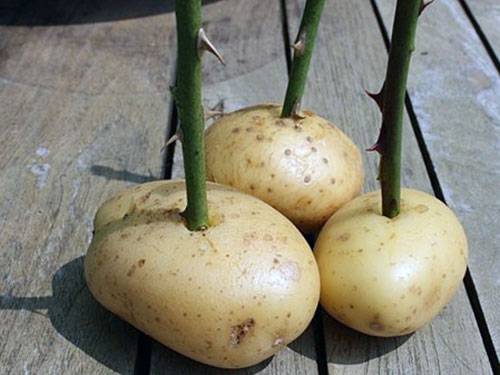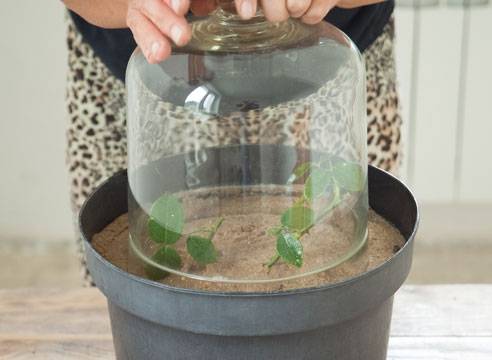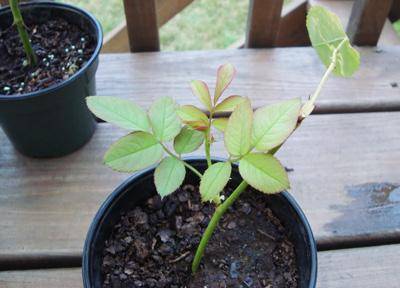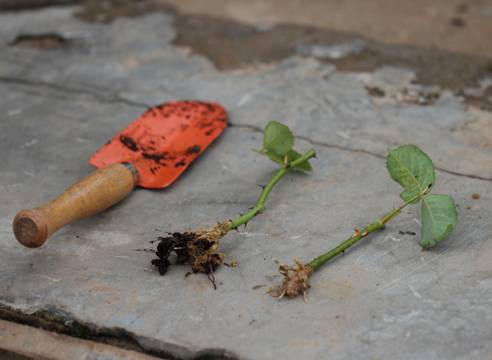Content
Once having planted a magnificent rose on your personal plot, you will probably want to propagate it in order to create a new flower arrangement, share the beauty with friends or acquaintances. The easiest way to propagate roses is by cuttings. It can be carried out in spring or autumn. Cutting roses in the fall at home will not be difficult if you know and use the basic rules for implementing this procedure. It is about them that we will talk in more detail later in the article.
Advantages of grafting
The gardener can propagate roses in his personal plot in two ways: by cuttings or grafting. Moreover, grafting is the preferred method, since it has a number of comparative advantages:
- Roses grown from cuttings have a modest size, but a well-developed root system, which makes it easier to care for the plant.
- Plants obtained by cuttings tolerate cold winters better.
- When the aboveground part of the rose freezes, its stalk will give a full-fledged, varietal shoot from the lower dormant bud.
- Cuttings are very easy to get, because they are, in fact, the waste of the autumn pruning of plants.
- By grafting, you can get planting material from a magnificent bouquet of roses, preserving the memory of the gift for a long time.
- Cuttings can be used for almost all types of roses. At the same time, difficulties can arise only during reproduction of park and remontant varieties of this "prickly beauty".
- Roses grown from cuttings have a long life cycle.
Thus, if the question arises about the reproduction of roses, then you should not hesitate, because it is much easier and more efficient to do this using cuttings. The only "delicate" moment in this case will be the preservation of the culture in the first winter after the emergence of sprouts. Young and not yet fully rooted seedlings should be well covered to prevent freezing.
Preparing cuttings
Roses can be cut in spring and summer, at a time when the plant is about to bloom or is about to shed magnificent petals. It is also possible to effectively propagate a rose by cuttings in late autumn: in the last days of October - early November. It is at this time that it is recommended to prune plants in the garden, which means that planting material can be obtained without any problems.
Cutting cuttings consists of the following steps:
- from the total number of shoots, you need to choose ripe, healthy specimens, 4-5 mm thick;
- shoots of roses should be cut into pieces, leaving 3-5 well-developed buds on each of them;
- the upper cut should be made straight 2 cm above the extreme kidney. The lower cut on the shoot must be made oblique directly under the lower bud;
- remove the lower leaves on the handle and leave a few upper leaves. Leaving leaves are also recommended to be cut in half.
Important! Slices on the cutting should be done with a sharp garden pruner, which has been previously disinfected with a manganese or alcohol solution.
As can be seen from the description, the process of preparing cuttings itself is quite simple and will not cause any difficulties even for an inexperienced gardener. Also, a rather detailed description of the preparation of cuttings and an illustrative example of the implementation of the manipulation can be found in the video:
Rooting cuttings
Having prepared the cuttings of the rose, you can start rooting them.This rather complex process consists of a number of important points that you definitely need to know about:
Soil preparation
Rooting rose cuttings is necessary in a well-drained, nutritious soil. You need to cook it from sand, humus and sod land. So, the optimal composition of the soil includes 2 parts of the earth, and 1 part each of sand and humus. Clean river sand is also needed for rooting. It is poured in a layer of 3-5 cm on top of the nutrient soil. River sand will provide the necessary air circulation and drainage.
The prepared soil is filled into small plastic containers, the bottom of which has drainage holes. If necessary, at home, you can use water bottles or plastic buckets, containers.
Planting cuttings in the ground and optimal rooting conditions
Before planting a rose stalk in the ground, it is recommended to treat its lower cut with Kornevin or another growth stimulant. This will speed up the process of growing roots. In the absence of such a special preparation, it is also possible to successfully root a rose stalk, however, this will take a little longer.
The stalk of a rose is embedded in the upper layer of sand by 1.5-2 cm. As it grows, the roots will deepen into the soil and begin to feed from the lower layer of fertile soil. It is recommended to close up the cutting at a slight angle to the soil surface. The distance between the seedlings in one container should be at least 8 cm. After planting the cuttings, the soil must be slightly moistened by spraying the top layer from a spray bottle.
Further growth of roots directly depends on the conditions in which the plant will be. So, for the first 3 weeks, cuttings of roses should be in conditions with a humidity of 80-90% .. It will be possible to maintain such humidity in a greenhouse. To create it, you can cover the container with a film or a transparent plastic lid. It is necessary to spray the plant and soil inside the greenhouse once every 2-3 days. In the evening and morning hours, the greenhouse can be ventilated. During the day, it is recommended to hide pots with roses from direct sunlight in order to avoid burns.
After 3 weeks, the warm and humid microclimate should be changed. Lower the pots with cuttings into the cellar or basement for long-term winter storage. Storage temperature should be + 1- + 30C, the optimum humidity is 65-70%. In the spring, with the arrival of warmth, roses are planted in the ground and looked after in accordance with the requirements of a particular variety.
The given rooting method is quite simple. It is he who is often used by gardeners to propagate roses in their garden. Subject to all the rules of rooting and preparation of cuttings, the probability of survival of each seedling is very, very high. It is worth noting that cuttings can be rooted in this way not only in pots, but also in the garden, but in this case, you need to take care of a good and reliable shelter for the winter.
Rooting cuttings in potatoes
Throughout the history of growing roses, many different ways of rooting cuttings have been invented. One is to use potatoes. The tubers of this vegetable contain many useful substances and are a source of moisture and food for the cuttings. You need to use fresh and healthy tubers, a plastic pot and some fertile soil.
The eyes should be removed from the surface of the potato. The cuttings themselves are harvested in accordance with the above rules. The prepared planting material is treated with "Kornevin" and the lower part of the cutting is stuck into the potato tuber. Beforehand, a small hole can be made in the potato so that the stalk does not break.
Rooting will also require a plastic container and nutritious soil. At the bottom of the container, it is necessary to pour a drainage layer of expanded clay. In the top layer of nutritious soil, close up potatoes with shoots and lightly water it.For early rooting, it is recommended to cover the plantings with polyethylene or plastic to create a greenhouse effect.
An example of how to root a rose stalk in a potato is shown in the video. An experienced gardener will not only tell, but also show by example the process of rooting cuttings.
Rooting bouquet roses
Probably every woman is pleased to receive bouquets of roses as a gift, but, unfortunately, beautiful and bright buds delight the eye for a very short time. You can preserve memories and decorate your garden with new plants by rooting bouquet roses. They reproduce in a variety of ways. The above two options are also suitable for rooting, but there are some peculiarities:
- only fresh roses that have not been "preserved" by various additives for long-term transportation and storage in the store are suitable for rooting;
- slightly limp roses with wrinkled stems are not suitable for cultivation. They will soon just start blackening;
- cuttings should be dark green with no signs of damage or disease.
You can root bouquet roses as follows:
- The cutting prepared according to the above rules must be placed in a glass of water.
- Cover the shoots with a plastic bag, tie it loosely, leaving a small hole for air to enter.
- Place the container with plants under a fluorescent lamp. As soon as fresh leaves appear on the shoot, it is pruned again, leaving several developing buds.
- Place the growing stalk in a dark glass jar filled with water. A transparent plastic bag must be placed over the plant.
- After about a month, roots will begin to appear on the shoot. When their length is 1 cm, the plants can be planted in a nutritious soil.
The proposed method of rooting a rose in the fall is quite lengthy and requires patience and care from the gardener. At the same time, the result of rooting is always excellent, because as a result of such manipulations, half of the propagating seedlings will go to the flower bed in the spring. Another way to root bouquet roses in newsprint can be found in the video:
No wonder the rose is called the queen of the garden. Her beauty and grandeur involuntarily attract the eyes of any person. Many gardeners strive to create a magnificent rose garden that will delight and amaze relatives, friends and just passers-by. For these purposes, there is no need to buy a lot of seedlings, because the propagation of roses by cuttings in the fall will not be difficult and will not take much time. If everything is done correctly during the reproduction process, then you can acquire many young plants, and each presented bouquet or stalk from a neighbor will become another garden decoration from the general collection of roses.
